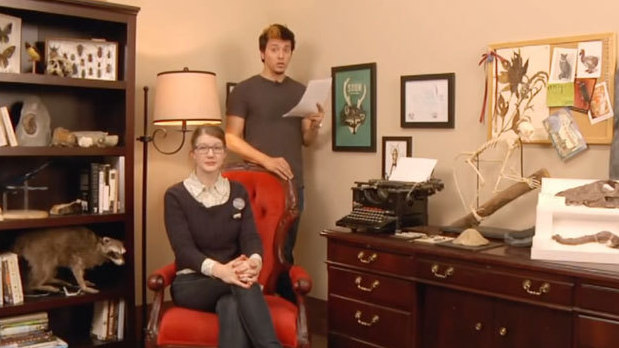Someone once said, “Not only is the universe stranger than we imagine, it is stranger than we can imagine.” While this is almost certainly true, the universe is awesome in its vast complexity, and the more we understand of it, the more amazing and mysterious it is.
So, on that note, here’s some fun stuff from the world of science.
First up, from camwyn, an animated GIF file that illustrates the relative sizes of celestial bodies, starting with the Earth and moving outward. As she notes:
Turns out that when you are conscious of the size of the largest known astronomical object in existence- VY Canis Majoris, a star so huge that it literally takes eight days for light to get from one side to the other- you have a hard time taking “But you ruined my view!” as quite so relevant to the greater scheme of things.
If that wasn’t enough to confirm that we're all really puny , epi_lj points me to an article in New Scientist magazine which suggests that it’s entirely possible that the entire universe is, in fact, a giant hologram:
For many months, the GEO600 team-members had been scratching their heads over inexplicable noise that is plaguing their giant detector. Then, out of the blue, a researcher approached them with an explanation. In fact, he had even predicted the noise before he knew they were detecting it. According to Craig Hogan, a physicist at the Fermilab particle physics lab in Batavia, Illinois, GEO600 has stumbled upon the fundamental limit of space-time – the point where space-time stops behaving like the smooth continuum Einstein described and instead dissolves into “grains”, just as a newspaper photograph dissolves into dots as you zoom in. “It looks like GEO600 is being buffeted by the microscopic quantum convulsions of space-time,” says Hogan.
If this doesn’t blow your socks off, then Hogan, who has just been appointed director of Fermilab’s Center for Particle Astrophysics, has an even bigger shock in store: “If the GEO600 result is what I suspect it is, then we are all living in a giant cosmic hologram.”
The best part about this story is that it was discovered more or less by accident. Issac Asimov once said that the most exciting words in science were not “Eureka! I have it!”, but “Hmmmm. That’s funny.”:
So would they be able to detect a holographic projection of grainy space-time? Of the five gravitational wave detectors around the world, Hogan realised that the Anglo-German GEO600 experiment ought to be the most sensitive to what he had in mind. He predicted that if the experiment’s beam splitter is buffeted by the quantum convulsions of space-time, this will show up in its measurements (Physical Review D, vol 77, p 104031). “This random jitter would cause noise in the laser light signal,” says Hogan.
In June he sent his prediction to the GEO600 team. “Incredibly, I discovered that the experiment was picking up unexpected noise,” says Hogan. GEO600’s principal investigator Karsten Danzmann of the Max Planck Institute for Gravitational Physics in Potsdam, Germany, and also the University of Hanover, admits that the excess noise, with frequencies of between 300 and 1500 hertz, had been bothering the team for a long time. He replied to Hogan and sent him a plot of the noise. “It looked exactly the same as my prediction,” says Hogan. “It was as if the beam splitter had an extra sideways jitter.”
I love the whole world. The world is just awesome.
 Science Reporter Emily Graslie Reads Her Mail – And It’s Not So NiceI’ve said it before, so I’ll say it again: Emily Graslie’s ” The Brain Scoop” is one of the warmest, slyest video blogs on the web.
Science Reporter Emily Graslie Reads Her Mail – And It’s Not So NiceI’ve said it before, so I’ll say it again: Emily Graslie’s ” The Brain Scoop” is one of the warmest, slyest video blogs on the web.
 Somebody Put a Camera on a Toy Car and Drove It Into a Pride of LionsEight curious lions and a remote control buggy with a camera on top make for one gorgeous viral video.
Somebody Put a Camera on a Toy Car and Drove It Into a Pride of LionsEight curious lions and a remote control buggy with a camera on top make for one gorgeous viral video.
 The Most Heartbreaking “Winnie The Pooh” Comic You’ll Ever ReadChristopher Robin Milne’s original stuffed animals, which inspired Pooh, Tigger, Eeyore, and Kanga (now displayed at New York Public Library). The real Christopher Robin had a fraught relationship with his famous playwright/ literary editor father. A. A. Milne based “Winnie the Pooh” on his son’s childhood, which the real Christopher Robin Milne grew up to resent.
The Most Heartbreaking “Winnie The Pooh” Comic You’ll Ever ReadChristopher Robin Milne’s original stuffed animals, which inspired Pooh, Tigger, Eeyore, and Kanga (now displayed at New York Public Library). The real Christopher Robin had a fraught relationship with his famous playwright/ literary editor father. A. A. Milne based “Winnie the Pooh” on his son’s childhood, which the real Christopher Robin Milne grew up to resent.


